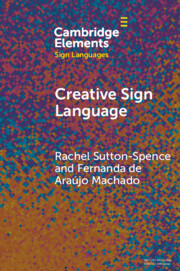Element contents
Creative Sign Language
Published online by Cambridge University Press: 12 August 2023
Summary
Keywords
- Type
- Element
- Information
- Series: Elements in Sign LanguagesOnline ISBN: 9781009344883Publisher: Cambridge University PressPrint publication: 24 August 2023



